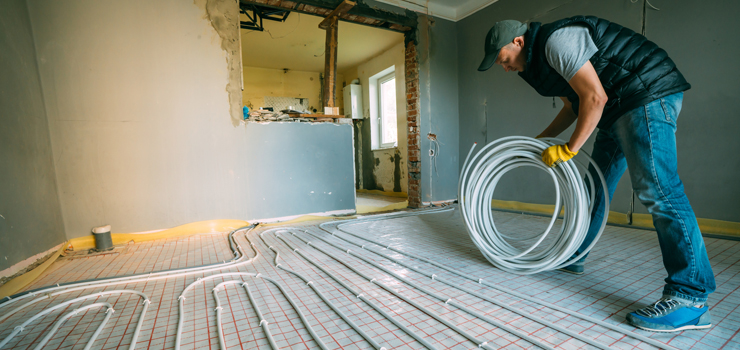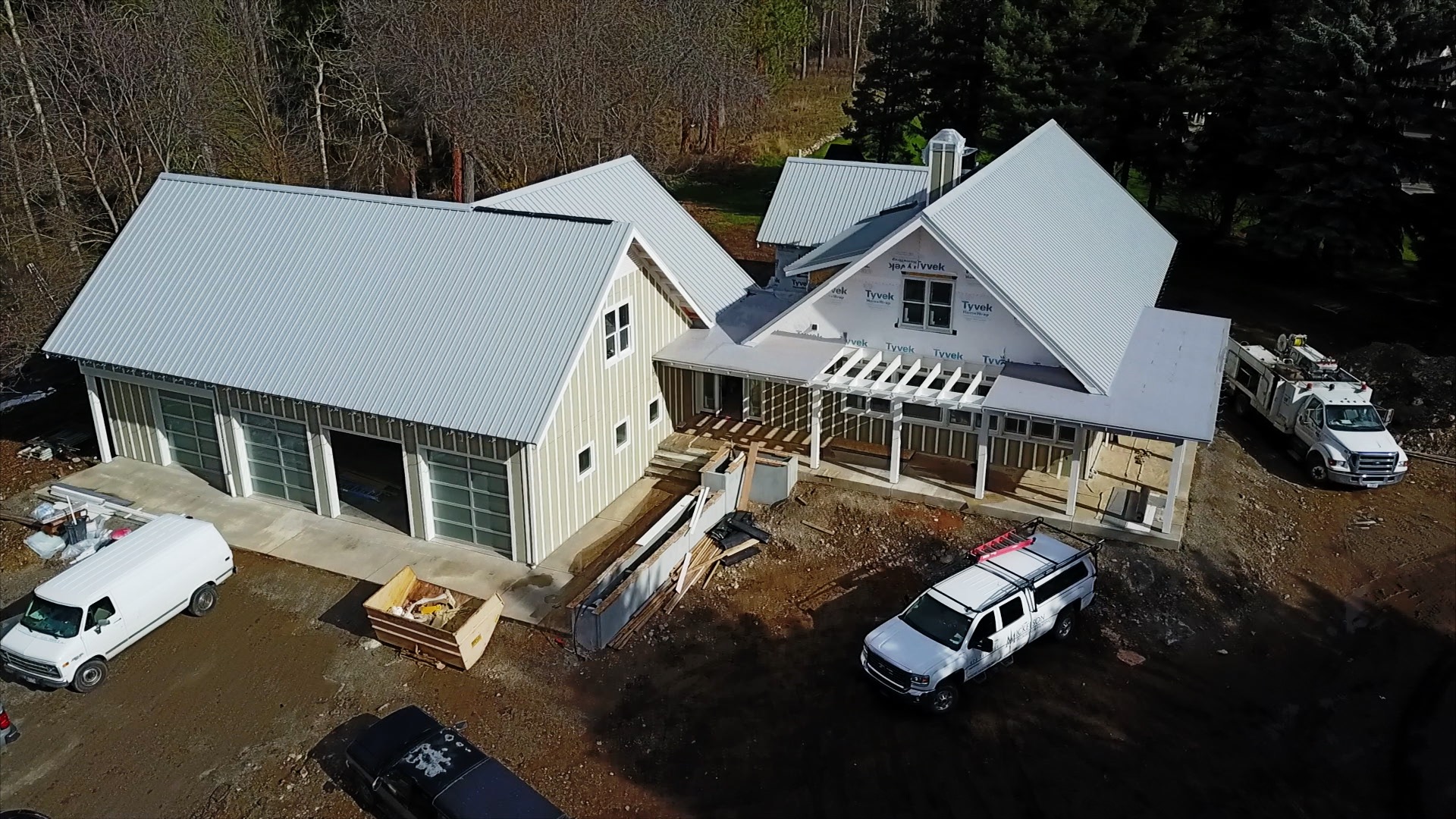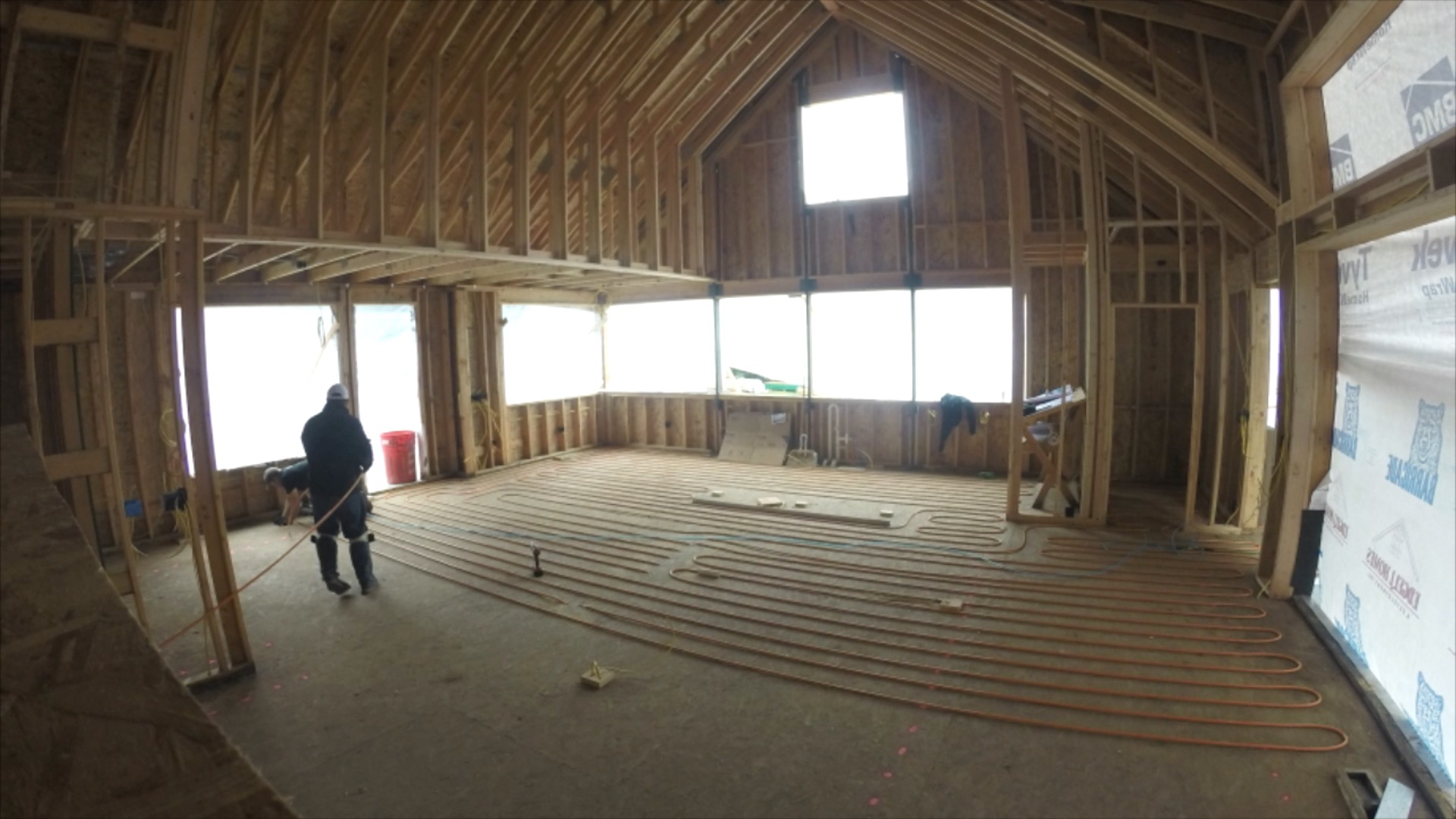Complex hydronic systems are so 2008, at least according to Mechanical-Hub ProStaffer Andy Mickelson, who owns Mickelson Plumbing and Heating in Missoula, MT. His three-man shop does plenty of high-end residential work, and their recipe for success, serviceability and efficiency includes a heavy dose of “keep it simple.”
On a custom home, where some contractors may be tempted to stack the material list high and deep, Andy does the opposite. He takes a step back from the blueprints and figures out how to use the fewest components needed without any compromise. Numerous zones, DHW production, multiple supply temperatures, and snowmelt loops can and are all handled without making things more complicated.
“There are a number of things you can do to keep systems simple,” said Mickelson. “I make sure to avoid ‘inadvertent’ redundancy: that is, two products that accomplish the same task.
Proper sizing of radiation, pipe, pumps and boilers accurately is obviously important, too. Picking a control system that accomplishes what you need and nothing more is helpful.
“Another thing we began doing a few years ago, and have noticed an improvement since, is sizing and grouping our zones to the capacity of a specific pump, “ explained Mickelson. “We do this instead of creating a zone with no real parameters, and trying to find a pump that fits the zone or zone group.”
Like a round peg in a round hole, selecting your circulator first can save a lot of trouble, as well as the issues that come with over or under pumping a system.
Starting in late October of last year, Mickelson was hired for a job that would test his ability to “keep it simple.”
Just out of town, the customer had purchased a nice lot with an older, 800 square-foot home. The house was levelled and the basement foundation was re-used. The plan was to build a new 5,000 square-foot, two-story home on top of and around the original foundation.
Above: Mickelson kept the hydronic design for this 5,000 square-foot home as simple as possible.
Mickelson’s work included installation of a mod-con boiler, seven zones of in-floor radiant, a hydronic unit ventilator, high-temp baseboard, and 400 square-feet of snowmelt.
Pick the pump first
“Like we do on all our jobs, I interviewed the homeowner long before we started the work in order to really understand what they wanted,” said Mickelson. “Comfort was paramount, and budget not as much. A thin concrete slab covers all radiant tubing, which is set at nine-inch centers.”
Before Mickelson started his loop layouts, he chose a variable speed circulator to serve all of the zones, with a total of six pumps. Additionally, single-speed ECM circulators are used on the boiler and the indirect water heater.
Each radiant pump serves a group of zones. The zones are paired up according to the pump’s capacity, in terms of both head loss and flow rate. That way, there aren’t any extra, underutilized circulators.
Once the pump has been selected and the heat loss has been completed, the zones can be designed to fit the home. A common misconception about radiant circuits is that they must be as close to 300 feet long as possible. This just isn’t true. By dropping the length of each circuit, the head loss can be comfortably managed. The downfall to this is that the zone may require more circuits, but the difference between five and seven circuits is minimal. It’s the same amount of tubing and no real noticeable increase in labor, just a larger manifold and a manageable head loss.
Low temp
Through zone valves, each pump supplies the appropriate amount of water and heat to a manifold, located remotely. Half-inch PE-RT (Polyethylene – Raised Temperature) tubing was laid out before the gypcrete was poured.
“We chose the PE-RT tubing instead of PEX because the radiant work was done throughout the winter. With spells of sub-zero weather, the increased flexibility of PERT was a huge benefit, especially considering our tight tube spacing.”
Above: PE-RT tubing was laid at 9-inch centers before Gypcrete was poured.
Because of the hydronic radiators, unit ventilator and snow-melt, the boiler maintains the buffer tank at 140°F at an outdoor design condition of -15°F. To make low temp water for the radiant zones, a 4-way mixing valve with an actuating motor was used.
“The mixing valve sets the final delivery temp to all the low-temp zones based on outdoor temperature,” said Mickelson. “It’s one of three elements at play here that really allow us to provide the exact temperature and flow rate to the radiant zones, so we’re really capitalizing on the primary/secondary piping, and squeezing every last ounce of comfort and efficiency out of the system. The other two elements are the outdoor reset on the higher temp boiler zones, and the variable-speed, Delta-T pumps. They all work hand in hand.”
The home has several areas with structural elements which made installing some of the tubing a challenging. Because of this, Mickelson had no choice but to run supply and return piping through exterior walls. As a guard against the challenge of Montana winters, he wanted to run a glycol solution in the system.
High temp
The fourth and fifth circulators serve the home’s three high-temp zones directly out of the buffer tank. In the basement, where the existing, uninsulated slab is still in place, baseboard was used in lieu of radiant tubing. Mickelson had considered ceiling radiant, but there wasn’t enough height to allow it. The circulator used for the baseboard zone also supplies water to the 12,000 BTU unit ventilator in the garage attic.
The last variable-speed circulator serves as the snow melt system pump on the loop side of the brazed-plate heat exchanger. Mickelson uses a snowmelt control to manage automatic operation and maintain a 25°F Delta-T across the 400 square-foot zone.
“Because of a thoughtful design, we’re covering five different loads with one boiler while installing it in a relatively tight space, all without being overly complicated,” said Mickelson.
“In the case of an emergency, I only have to deal with a single control system or one replacement pump,” he added. And with all that said, I can’t think of a quieter, more comfortable, or higher efficiency heating system.”



